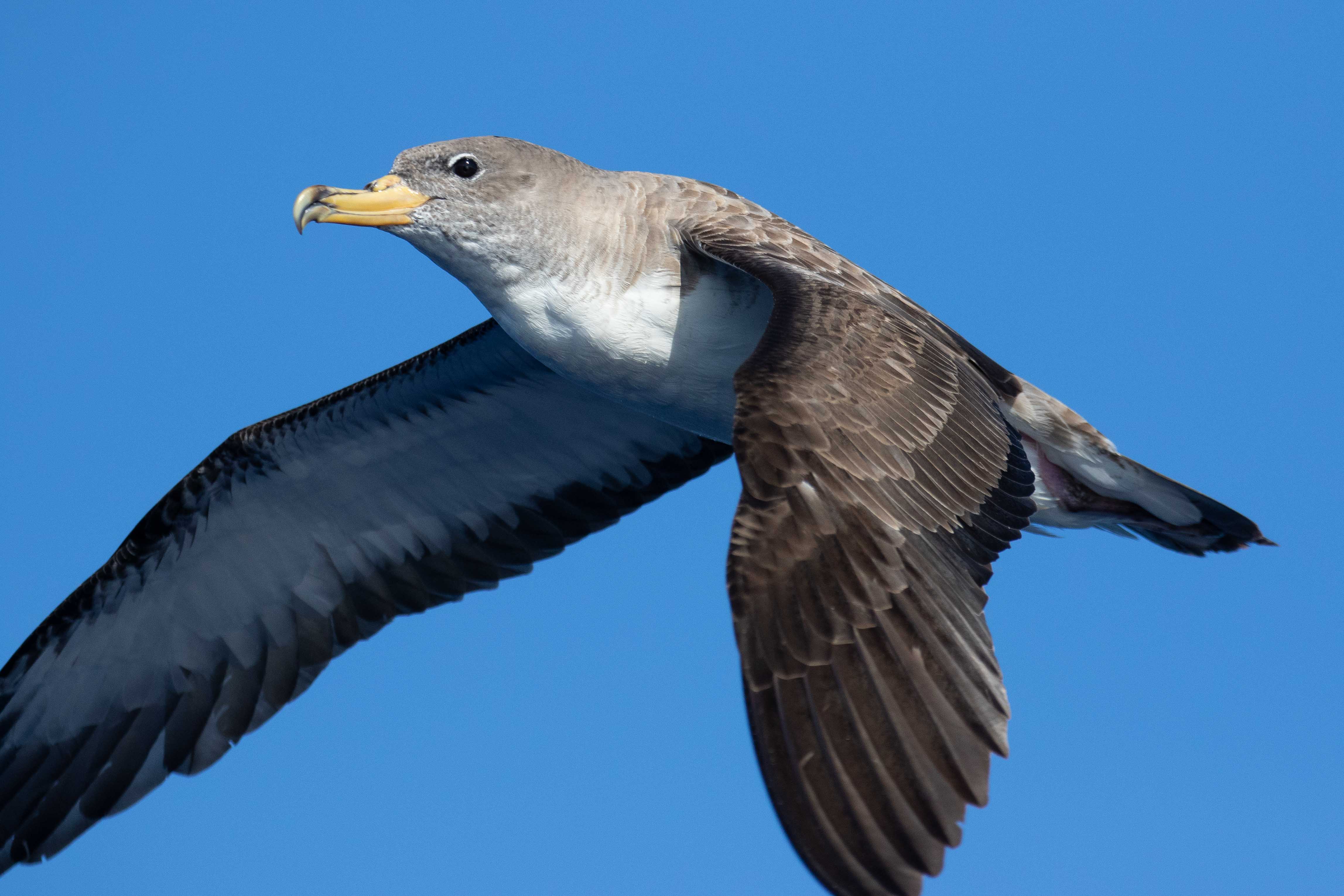We spent last week on a volcano in the Atlantic Ocean: the fabulous island of Madeira. I was with my family and my parents, but with their consent I managed to negotiate three afternoons at sea on the Windbirds pelagic trips run by Hugo and Catarina. Like most endemic island birding, the total number of species recorded was small but specialised. So, for a change, I’m going to write up this trip by species, rather than day-by-day accounts. First, the most abundant seabird species, Cory’s Shearwater.

Madeira is home to some 3,000 pairs of Cory’s Shearwaters and whilst this is a common species, it was always a joy to see them, especially at close range.
Cory was an American ornithologist who first described the species. Madeira has long been a stronghold for Cory’s Shearwater. Throughout the nineteenth century an annual harvest of up to 30,000 chicks took place on the Selvagens Islands, some 267 km to the south of Madeira. The birds provided local meat, whilst their feathers were sold to England as eiderdown. In 1969, following the decimation of the species, hunting was banned. In the last fifty years, numbers of breeding Cory’s Shearwater have recovered significantly and it was the most abundant seabird species that we saw.
On our third day, I got an early morning bus out from the capital Funchal to the south-facing headland of Ponta da Cruz for a brief land-based seawatch. It felt appropriate to get some land-based views of Cory’s Shearwater, before heading out to sea. My short journey was so efficient and sunrise is so late in the tropics, that I arrived in total darkness at 6:45am. Over the next half hour the sky lightened and revealed flocks of resting Cory’s Shearwaters on the water. As the sun rose above the eastern horizon, they gradually took to the wing, passing Ponta da Cruz, all flying west. There was absolutely no wind and the sea was flat. The birds were in the middle distance so gave pretty good views. My first Bulwer’s Petrel appeared amongst them, a black shadow, all slim long wings and tail.

Later in the week our family group ended up at Port Moniz, the far north-westerly point on the island. You know a site is good for seawatching, when there are notice boards with pelagic species on them positioned by the sea:

Below: “Oh, we appear to be at one of Madeira’s best sea-watching spots… and I just happen to have my ‘scope in the car!” Behind me are the famous natural swimming pools, where we spent the afternoon. The light was fabulous for seawatching here, Cory’s Shearwaters streamed past in the middle distance, glowing brown and white against a deep blue sea.

A short whale watching trip in Funchal harbour showed just how abundant and close to the shore Cory’s Shearwaters are in Madeira:

At night you can hear Cory’s Shearwaters calling everywhere, even close to the capital, Funchal. The higher-pitched calls of the male contrasting with the lower-pitched calls of the female:
[© Anthony McGeehan , XC489952. Accessible at www.xeno-canto.org/489952]
But it was the pelagic trips that brought the most memorable encounters with Cory’s Shearwater:


On one occasion, we spotted a huge feeding frenzy of Cory’s Shearwaters on the horizon to the south:

As we approached, with the Desertas Islands in the background, birds could be seen sitting on the water:

The latin name for Cory’s Shearwater is Calonectris borealis, literally “beautiful swimmer of the north”. This is a slightly surprising name for a species that is usually associated with flight, although after feeding and in calm conditions many were resting on the sea. From a distance, their size and grey-brown colouration combined with their large yellow/orange bill was slightly reminiscent of a seeing distant flock of Greylag Geese on the sea! Close up however, these are great birds.

Some birds had eaten so much, that they appeared to be in difficulty on the water. This bird was not bathing, it was just floating, partially submerged:

Cory’s Shearwaters have no crop, but like most birds have a large glandular forward stomach and a smaller rear stomach, the gizzard, where the more resistant undigested items are broken down, for example, squid beaks (see here). Hugo thought that the behaviour we were witnessing helped recently taken food settle in the glandular stomach before the birds could take off again. They certainly looked odd, either partially submerged or holding their wings outstretched, but then would happily take flight.

Cory’s Shearwaters have huge bills. The tip of the upper mandible curves right around to form a sharp hook. Presumably, this helps secure captured prey items, as well as being a fearsome cutting blade. Our close views allowed us to study the bill and tubes in detail:


Some birds passed within a few metres of us, giving point-blank views. Note the white crescents above and below the eye. Not the kind of detail that you get to see in UK waters very often.

Below, an uncropped shot from the boat, giving some idea of how just close these fabulous birds sailed past:


Next: Bulwer’s Petrel.
